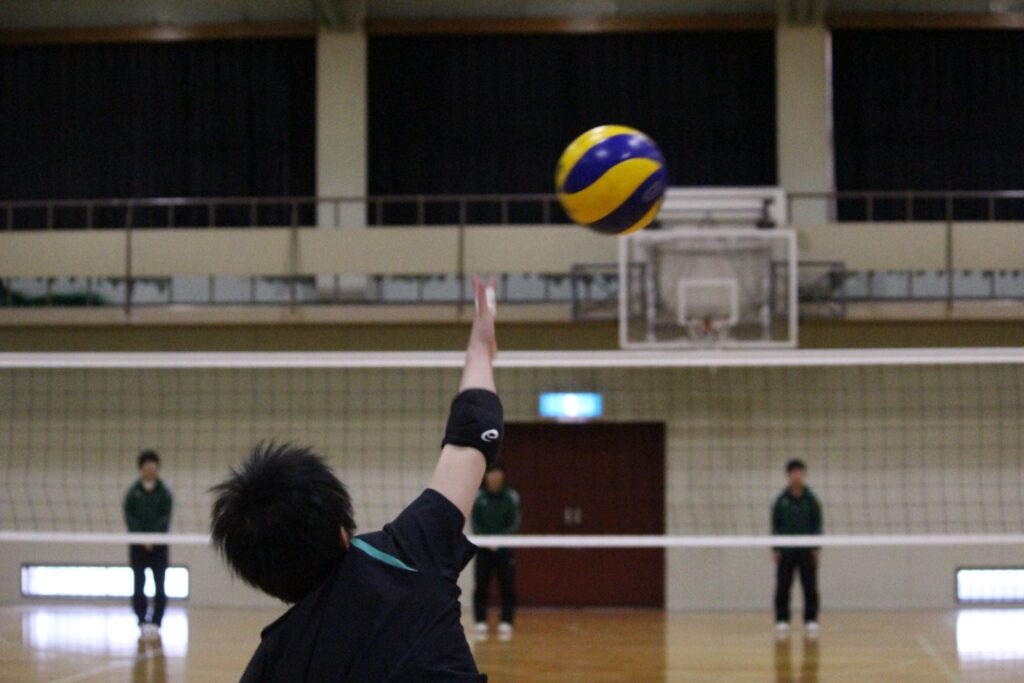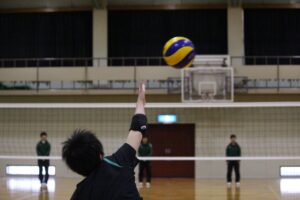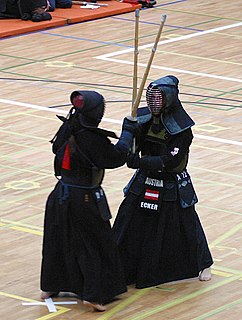
Volleyball is a great sport for children to develop teamwork, coordination, and motor skills.
Volleyball rules tailored for elementary school students are designed to preserve the fun of the game while ensuring safety.
These adjustments allow children to have fun learning the basics of volleyball while learning basic skills.
Below are some volleyball rules for elementary school students.

目次
Court size and net height
- Court Size: Smaller than an official volleyball court, typically 6 meters x 9 meters is recommended.
- Net height: The height of the net is set low according to the height of elementary school students, and is generally around 2 meters for both boys and girls.
Team composition and rotation
- Team size: Each team is often made up of 4 to 6 people instead of 6. This allows each player to touch the ball more and participate in the game.
- Rotation: Each time the serve moves, the player rotates one position clockwise, but this rule may be simplified or omitted for beginners.
serving
- Service Line: For elementary school students, it is permitted to move the service line forward from the official line. This makes it easier for children to successfully serve.
- Serve Attempts: If you miss a serve, you may have a rule that allows you to retry it a certain number of times (for example, once or twice).
Game progress
- Number of Sets: The game is played in 3-set matches, with each set being won by the first to score 15 or 25 points. However, the final set is often held with the first player to win 15 points.
- Point system: In games for elementary school students, it is common to use a rally point system (points are earned no matter which team wins the rally).
Other rules
- Ball: Use a ball made of lightweight and soft material, making it easy for children to handle.
- Simplify techniques: Especially for beginners, it is recommended to limit the use of advanced techniques (such as spiking and blocking) and focus on basic passes and serves.
Volleyball Rules for Elementary School Students is designed to help children learn the basics of the sport and improve their skills while having fun.
Through games, children not only develop their motor skills, but also the spirit of teamwork and fair play.

Volleyball used by elementary school students
Volleyballs used by elementary school students have different characteristics than volleyballs for adults.
These differences are important in making it easier for children to learn the skills and have fun while playing.
Below, we will explain the characteristics, size, weight, and how to choose a volleyball for elementary school students.
Features
- Lighter weight: Elementary school volleyballs are generally lighter than adult volleyballs. This is to make it easier for children to handle the ball and reduce the burden on them in the process of learning techniques such as serving, receiving, and setting.
- Softness: Elementary school volleyballs are made of soft material to reduce impact on fingers and arms. This allows children to hit the ball back without fear and keeps them safe even during long periods of play.
size and weight
- Size: According to the official rules of the International Volleyball Federation (FIVB), the circumference of an adult volleyball is 65-67 cm. However, balls for elementary school students generally have a small circumference to make them easier to handle.
- Weight: Adult volleyballs weigh between 260-280 grams, but for elementary school students it is recommended that they be lighter. Generally, a ball of around 200-220 grams is suitable for elementary school students.
How to choose
- Match the age and skill level: Since the abilities of younger and older elementary school students are different, it is important to choose a ball that matches the child’s age and skill level.
- Check for approved balls: Your school or local league may specify a specific type of ball. By practicing with certified balls, you can improve your adaptability in matches.
- Get a feel for it: If possible, try holding the ball in your hands to see how easy it is to hold and how the material feels. It is important to choose a ball that your child feels comfortable with.
Volleyball for elementary school students is designed to help children learn volleyball safely and in a fun way.
By choosing a lightweight and soft ball, children can effectively learn techniques and fully enjoy the fun of volleyball.
Choosing the right ball is the first step in fostering children’s interest in volleyball and helping them grow as a sport.
Important things in elementary school volleyball





